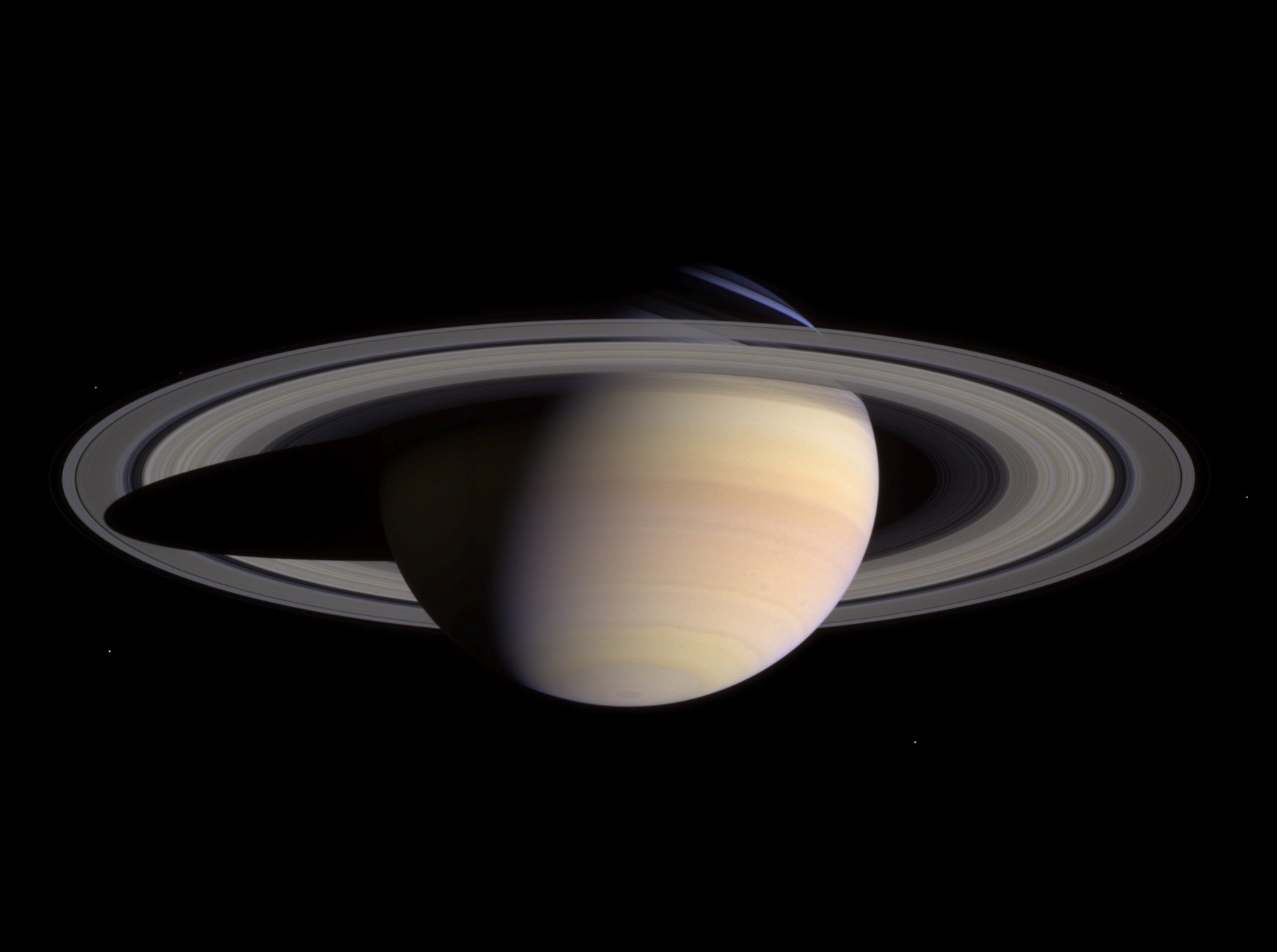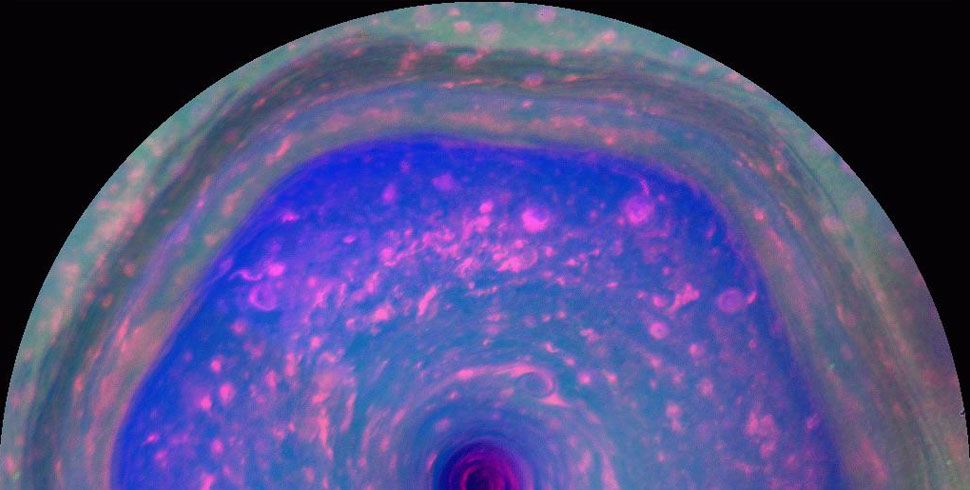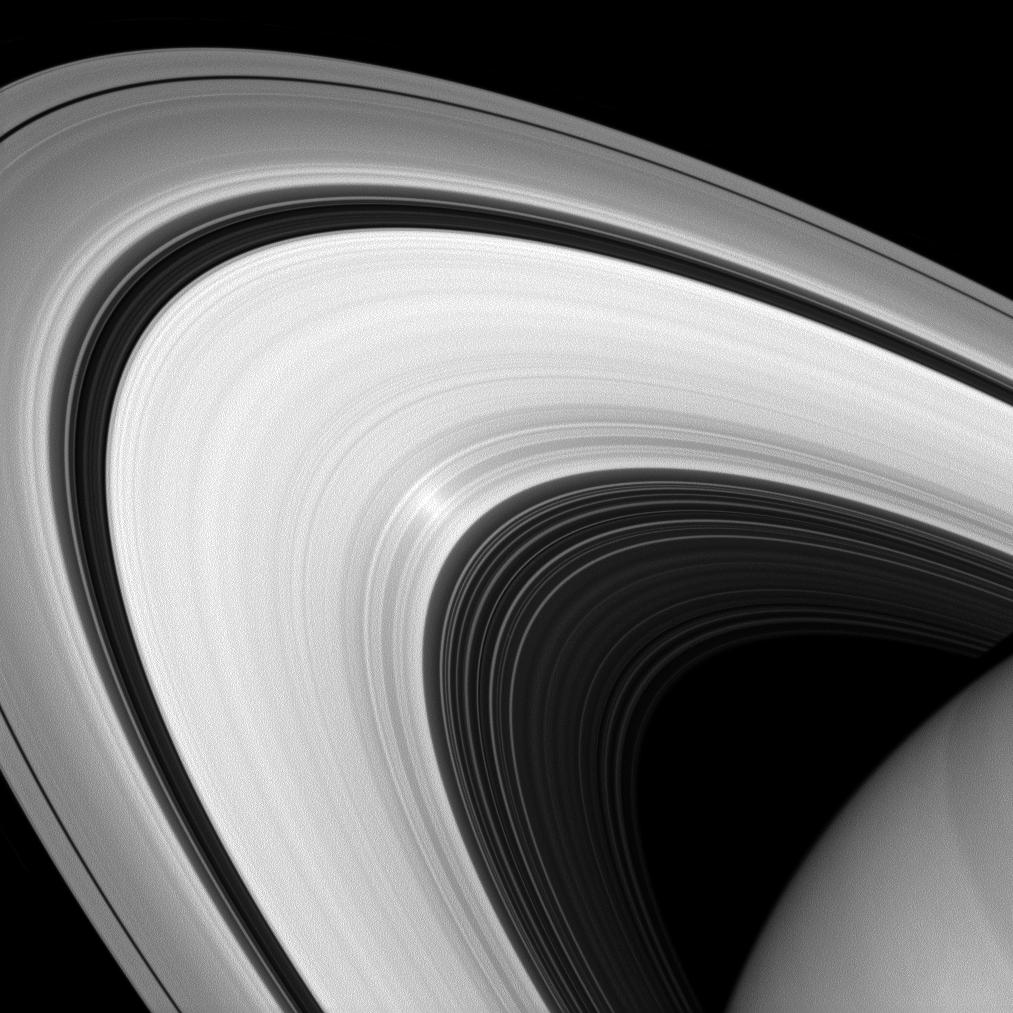Saturn
Article curated by Grace Mason-Jarrett
The planet Saturn is easily identifiable by it’s ring structures. At over 270,000 km wide, these majestic bands are held in place by ‘shepherd’ moons, called as such because their gravitational pull ‘herds’ dust and fragments of space rocks into the rings we can see. NASA’s Cassini mission has been a big player in the collection of data about this planet, an extension of which - the solstice extension - intends to finish in september 2017. There’s so much left to discover about this planet, about its internal processes and what exactly made it become the way it is.

In the 1980’s Voyager sent images of a strange hexagonal cloud formation around the northern pole of Saturn. Firstly it was assumed this was a one-time thing, a coincidental short-lived accident, but these thoughts were quickly disregarded when additional pictures of the geometric fog were taken by NASA's Cassini mission more recently. Scientists have been able to recreate this and other geometric shapes in the lab, possibly explaining what’s happening here - but it’s not clear what would be driving the rotation necessary for this effect. So far we don’t have a conclusive explanation for this cloud pattern, nor do we know exactly how stable it is or how long it will last. Some scientists suspect that since the rotation rate of the hexagon appears to be the same as the emission rate of radio waves from the planet (yes, Saturn is giving out radio signals), there could be a link here indicative of the rotation speed of Saturn’s core, however its thick atmosphere is preventing us from directly seeing exactly what might be going on.



Perplexing Rings of Saturn
The elegant rings which surround the gas giant can be seen from our own back gardens on a clear night with little more than an amateur telescope, and while they are Saturn’s defining feature it doesn’t necessarily mean we understand them. Cassini not only spotted the continued existence of the hexagon, but also noted the presence of molecular Oxygen in the rings and thin atmospheres of Saturn’s moons. This discovery has led to great discussion, since molecular oxygen is generally associated with organic processes – processes from living things. This is not the only way molecular oxygen is formed of course, geological activity can also produce the molecule, and less often it is a result of the interaction of radiation with the water molecule. Until more information is gathered we don’t know what could be causing oxygen to exist - in this form - in these places.


Voyager also noticed something strange about Saturn’s rings as it flew past. One of its darker bands, the B ring, showed radial lines going through it like spokes on a bicycle wheel. These lines troubled astronomers as they could not be explained by any gravitational interaction. What’s more, Cassini sent a few sets of images of Saturn’s rings back to Earth on its mission, some of which show evidence for these spokes and others which portray no trace of the mysterious blemishes. Astronomers agree that the lines must be short-lived and sporadic, appearing randomly in the ring structures for a few hours before being wiped away. Some scientists think they may be a result of Saturn’s magnetic field, while others believe it could be the result of lightning storms in the planet’s atmosphere. One of the goals of the “solstice extension” of the Cassini mission is to help scientists determine what the most likely cause of these unusual marks is.

Even more of a mystery, and perhaps a more obvious one, is where exactly did those rings come from? We have been able to see them for over 400 years now and yet we still don’t really know how they got there. From looking at the light coming through the rings, scientists have been able to determine their composition: ice, water and a little bit of space dust. Just like your mirror, astronomers expected the rings to reflect less light and become duller with age as more and more dust settles in the colossal bands; the fact that they are still bright led us to believe that the rings were a relatively new feature. However, new evidence suggests that the rings refresh themselves often when the material collides with itself within the rings, giving them the appearance of being younger than they are[1]. Scientists are still unsure of the exact causation of such an extensive collection of water and ice around Saturn.

Saturn's Energy Imbalance
Most of us like to keep our homes and offices at a steady, comfortable temperature. We do this by turning on the heating when it's cold, and opening windows or using air conditioning when it's too hot. What we're doing is changing the thermal equilibrium of our environment, the temperature at which the total energy coming in matches the energy going out.
All objects obey, or are supposed to obey, this simple law. If you put more energy in, it gets hotter. The hotter it gets, the more energy it radiates away, until the energy coming in is the same as the energy going out. Saturn, along with its siblings Jupiter and Neptune, don't seem to want to play by the same rules - all three of the gas giants are emitting more heat than seem to be receiving[2]. This essentially means there is something heating up the giant planets, that we haven't managed to work out yet.
Learn more about Energy imbalance of the giant planets.

 3
3This article was written by the Things We Don’t Know editorial team, with contributions from Ed Trollope, Jon Cheyne, and Cait Percy.
This article was first published on 2015-08-27 and was last updated on 2018-01-21.
References
why don’t all references have links?
[1] Esposito, L,W., et al., (2008) Moonlets and clumps in Saturn's F ring Icarus 194(1):278-289 DOI: 10.1016/j.icarus.2007.10.001
[2] Ingersoll, A. P., (1990) Atmospheric dynamics of the outer planets. Science 248:308-315 DOI: 10.1126/science.248.4953.308
Recent saturn News
Get customised news updates on your homepage by subscribing to articles











